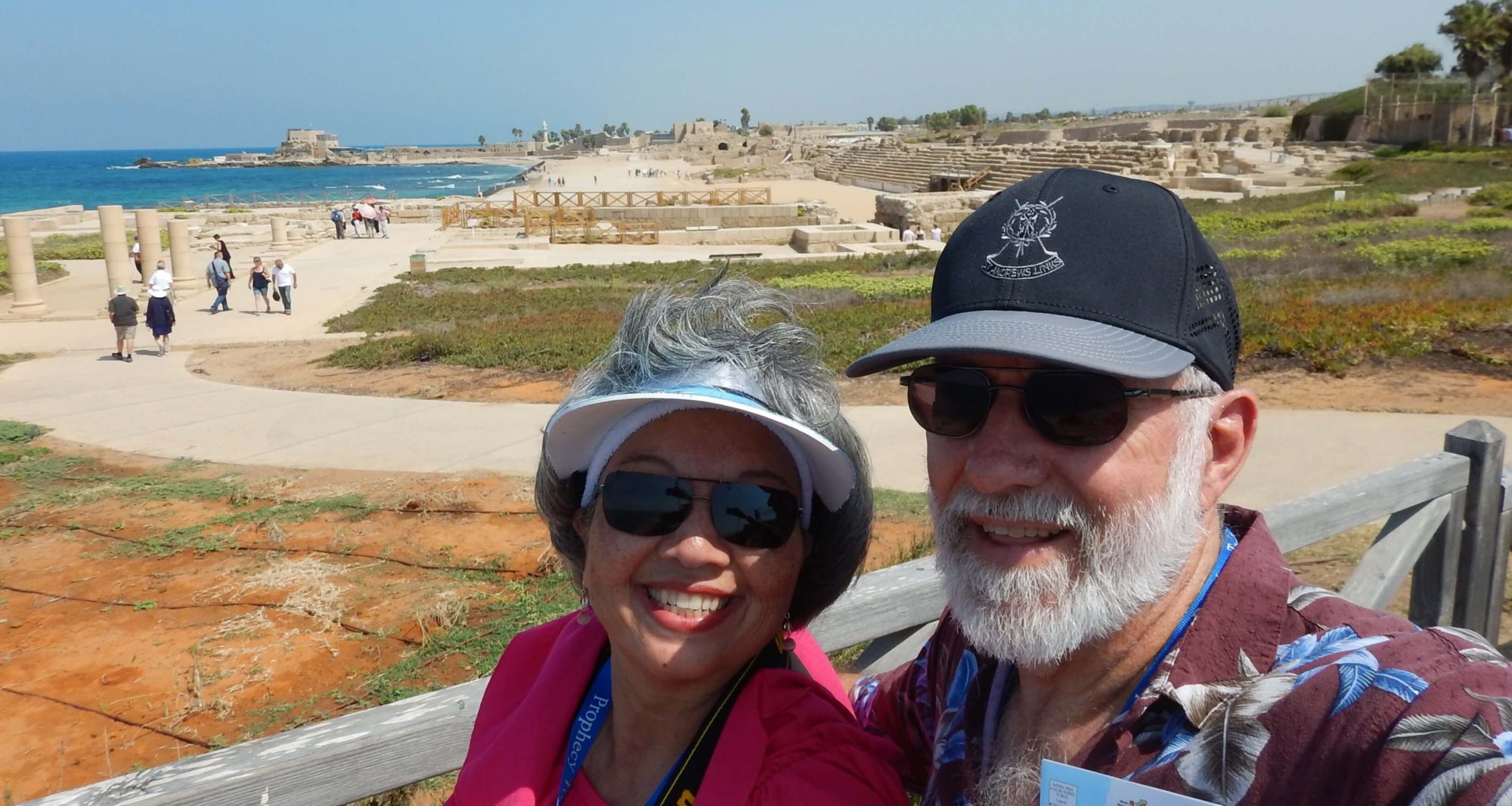It was a hot day in Rome today! The tour guide said it was going to be 40o degrees Celsius (104o F). I refused to believe it. Had to keep a positive mental attitude about the heat. I won’t deny it was hot, but every now and then there was a little breeze, so that helped. Unfortunately, our tour was at noon and would last until 3:30 pm, the hottest part of the day! If you’ve ever wondered what a turkey feels like when it’s roasting, I can now tell you! Okay, enough about that. On to the adventures of the day!
Palatine Hill was our first stop. It is the central hill in Rome where legend says that Romulus founded the city. It was a place where the wealthiest of Romans lived, and eventually it became a place where emperors such as Augustus, Tiberius, and Domitian (who had the largest palace… over 1000 rooms) lived.
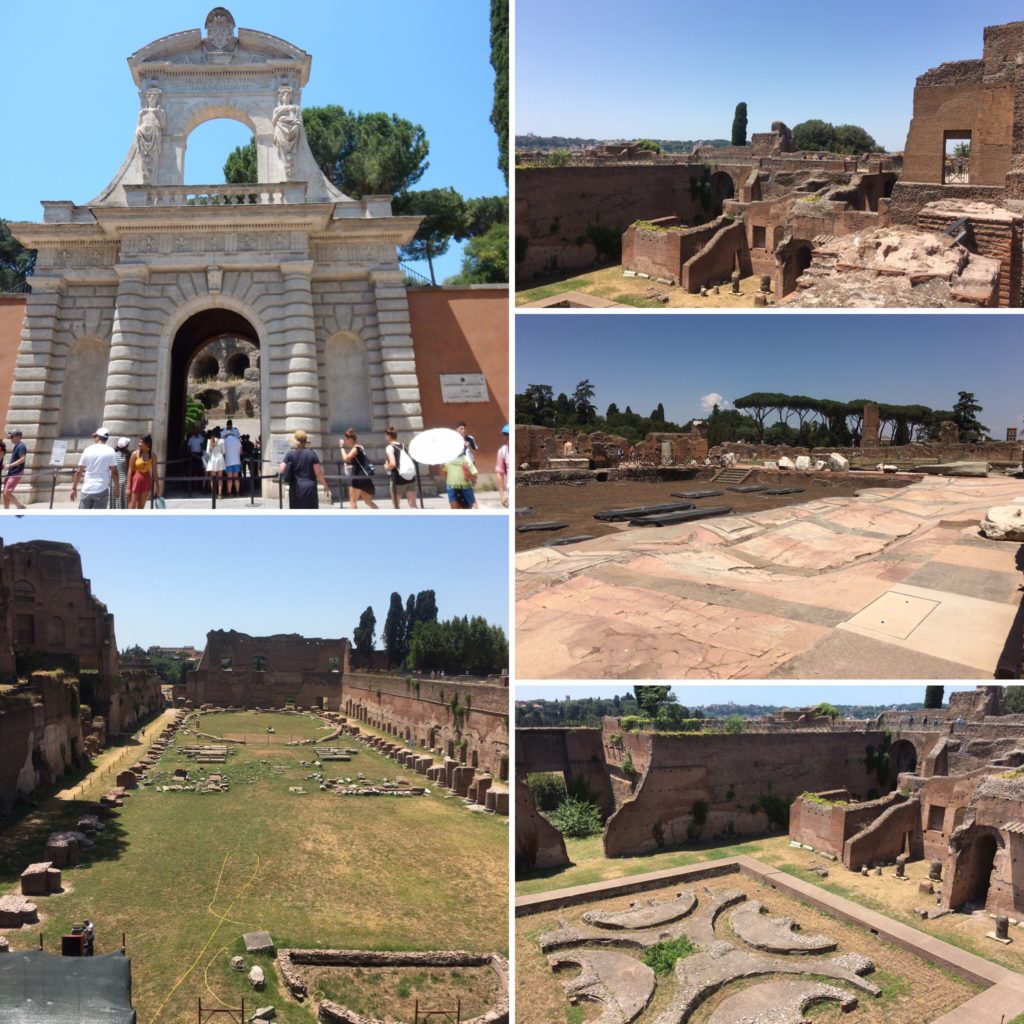
Clockwise from top-left: entrance to Palatine Hill, multi-levels of Domitian’s palace, marbled walkway, fountain ruins in Domitian’s palace, private garden in Domitian’s palace
The panoramic views from Palatine Hill are breathtaking, including the Circus Maximus on one side, the Colosseum on another, and the Roman Forum on still another. Here you can see the Roman Forum.
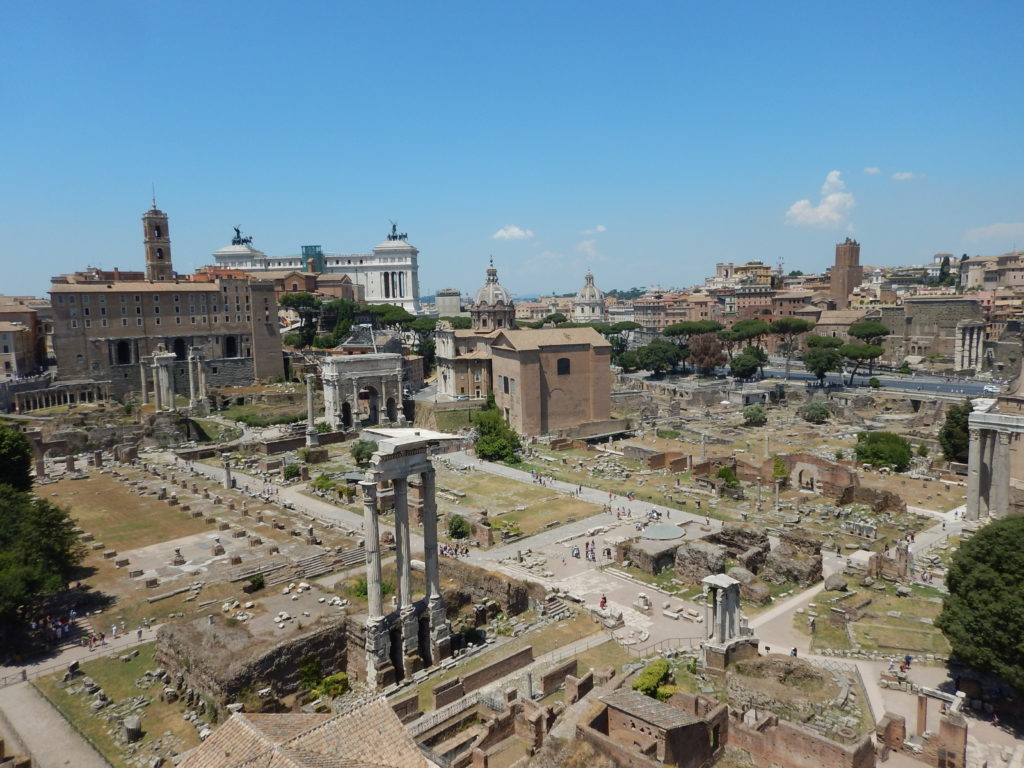
The Roman Forum was the city center. The structure with the three white columns in the foreground is the temple of Castor and Pollux. The smaller structure with four white columns on the right foreground is the temple of Vesta. The triumphal arch of Septimius Severus is seen just left of center. (There are only 3 surviving triumphal arches in Rome.) The beige building with the black windows near the center and to the right of the triumphal arch is the Curia Julia, the meeting house of the Roman Senate. It was later converted to a church in the 7th century AD.
On another spot, you can see Circus Maximus. This was a chariot-racing arena located in the valley between the Aventine and Palatine Hills. On the left, the view is from one end of the oval track. The top-left shows the enormity of the emperor’s palace on Palatine Hill as it overlooks Circus Maximus, and the bottom-left is a view of the track from the Aventine Hill.
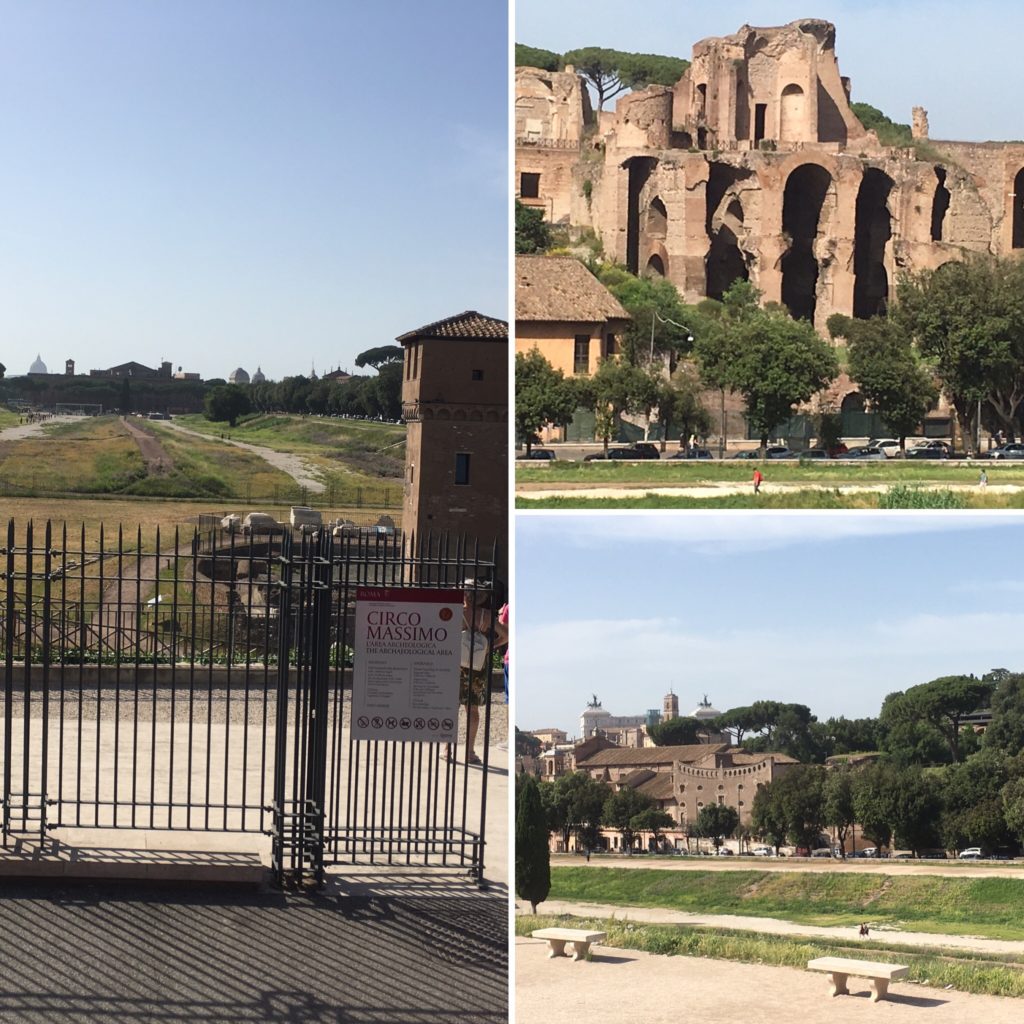
Here is the view from Palatine Hill facing the Colosseum. If you look closely below at this panoramic view from Palatine Hill toward the Colosseum, you can see the Arch of Titus. Titus was the Roman general who destroyed the temple in Jerusalem in 70 AD.
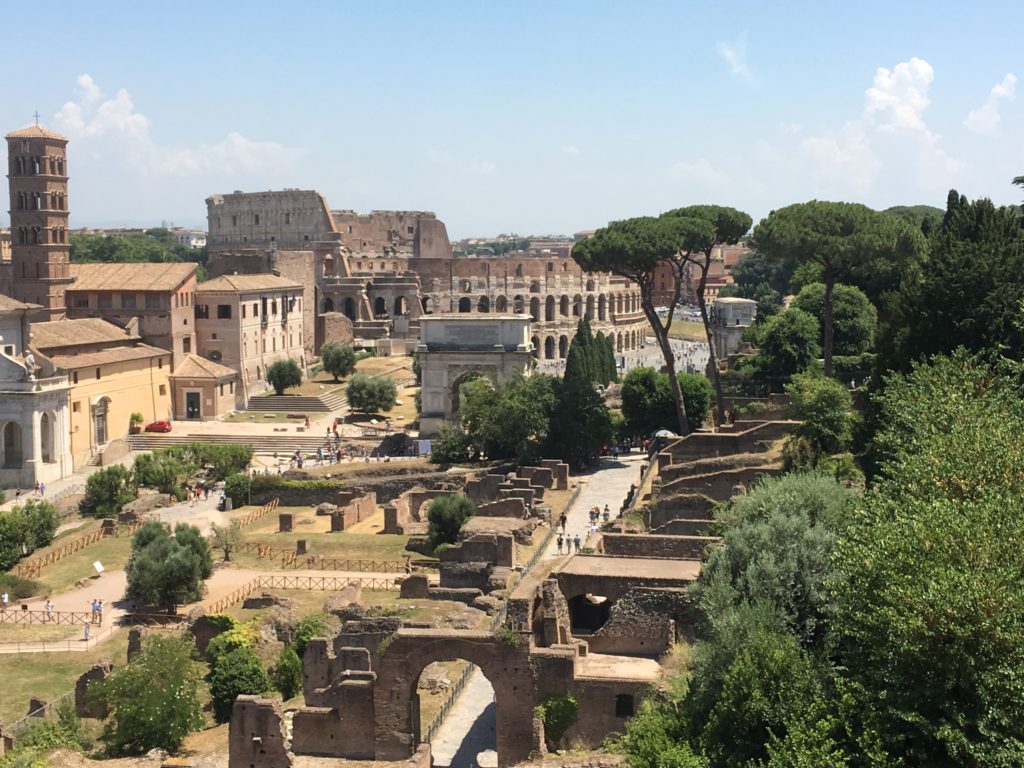
The engravings inside the arch show the articles of the temple being carried away as well as the Jews taken as slaves by the Roman army.
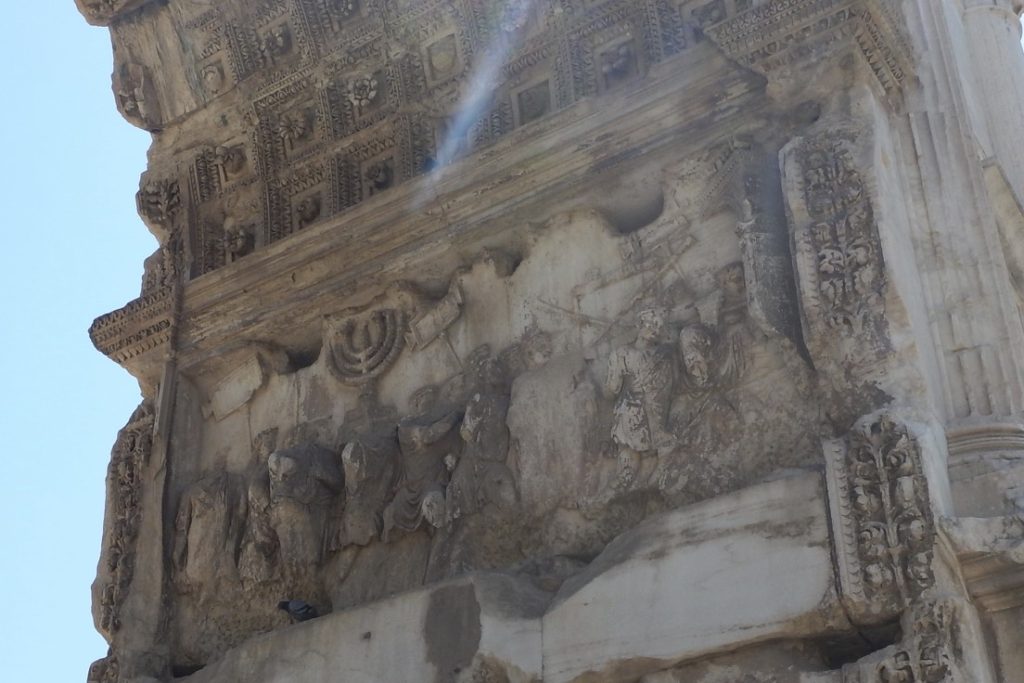
The largest Roman amphitheater was the Colosseum. Construction began around 71 AD by Emperor Vespasian to appease the Romans after the horrible reign of Nero. It was completed by his successor, Titus in 80 AD using Jewish slaves. When it was finished, Titus celebrated with over 100 days of gladiator competitions and wild animal fights. It is said that more than 2,000 people died and over 9,000 wild animals, including lions, tigers, elephants, giraffes, crocodiles, and other exotic creatures.
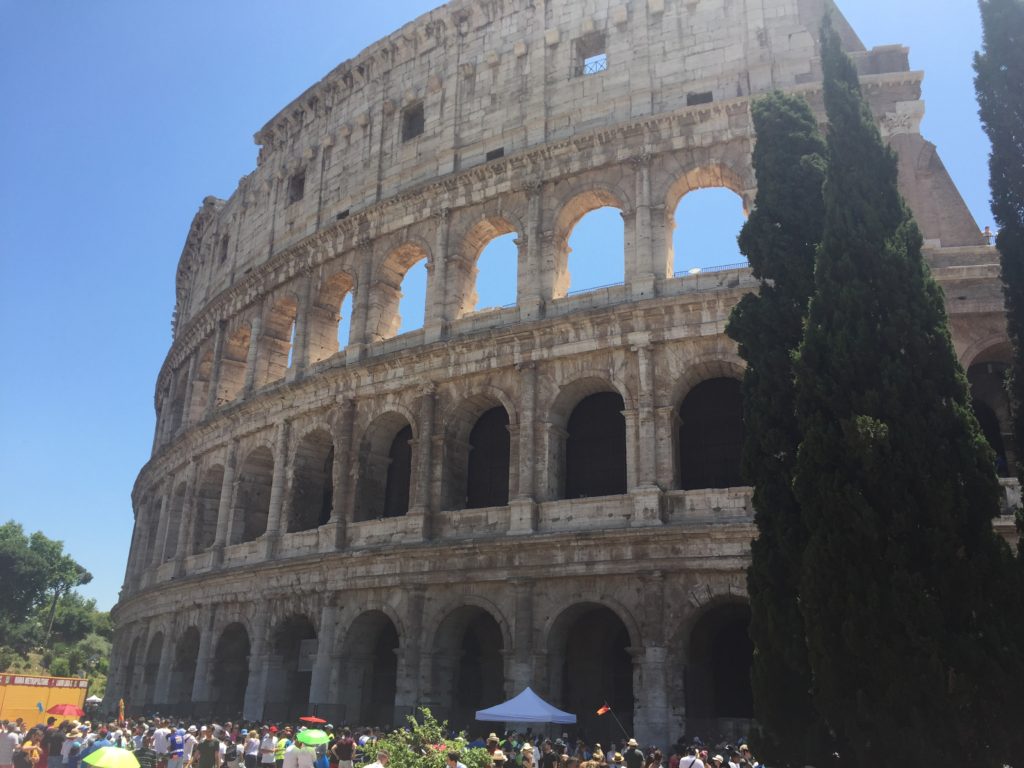
The third triumphal arch is the closest one to the Colosseum. It is the Arch of Constantine.
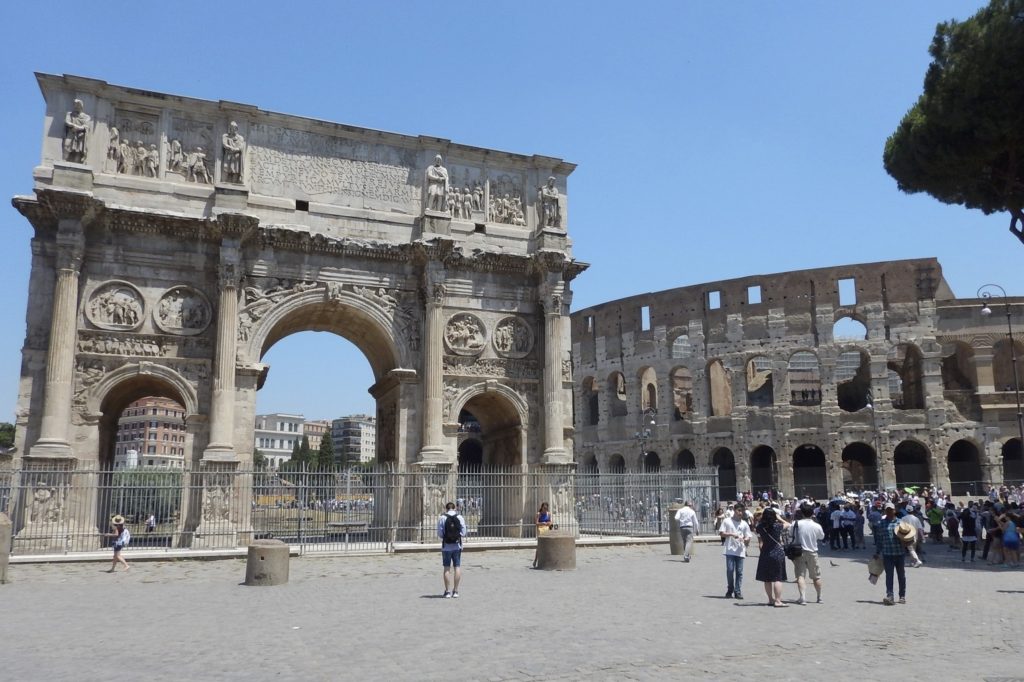
Our tour took us on to the arena floor. This would be where the gladiators fought, where exotic animals were paraded before the crowds, where public executions were held, and where enemies of the Roman Empire, including Christians, were killed. The central arena was covered with a great wooden floor. On top of it was a layer of sand to absorb blood. The arena was also surrounded by a 15 foot high wall to protect spectators from attacks by wild beasts in addition to archers standing by to shoot the animals should they advance toward the spectators. Today, the floor is now exposed down to its underground passages as archaeologists work on excavations below the surface.
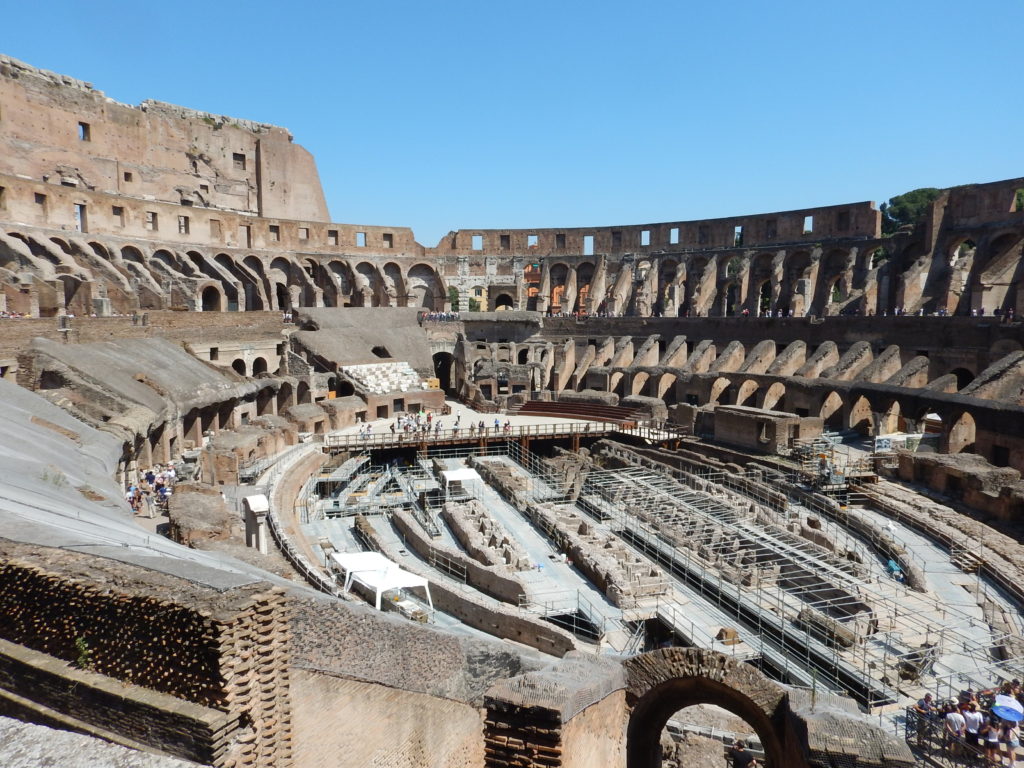
Here you can see John standing in the passageway to the arena. On the bottom-left, an archaeologist is working, and on the bottom-right, is the metal cross erected in 2000 to remember the Christian martyrs who died in the Colosseum.
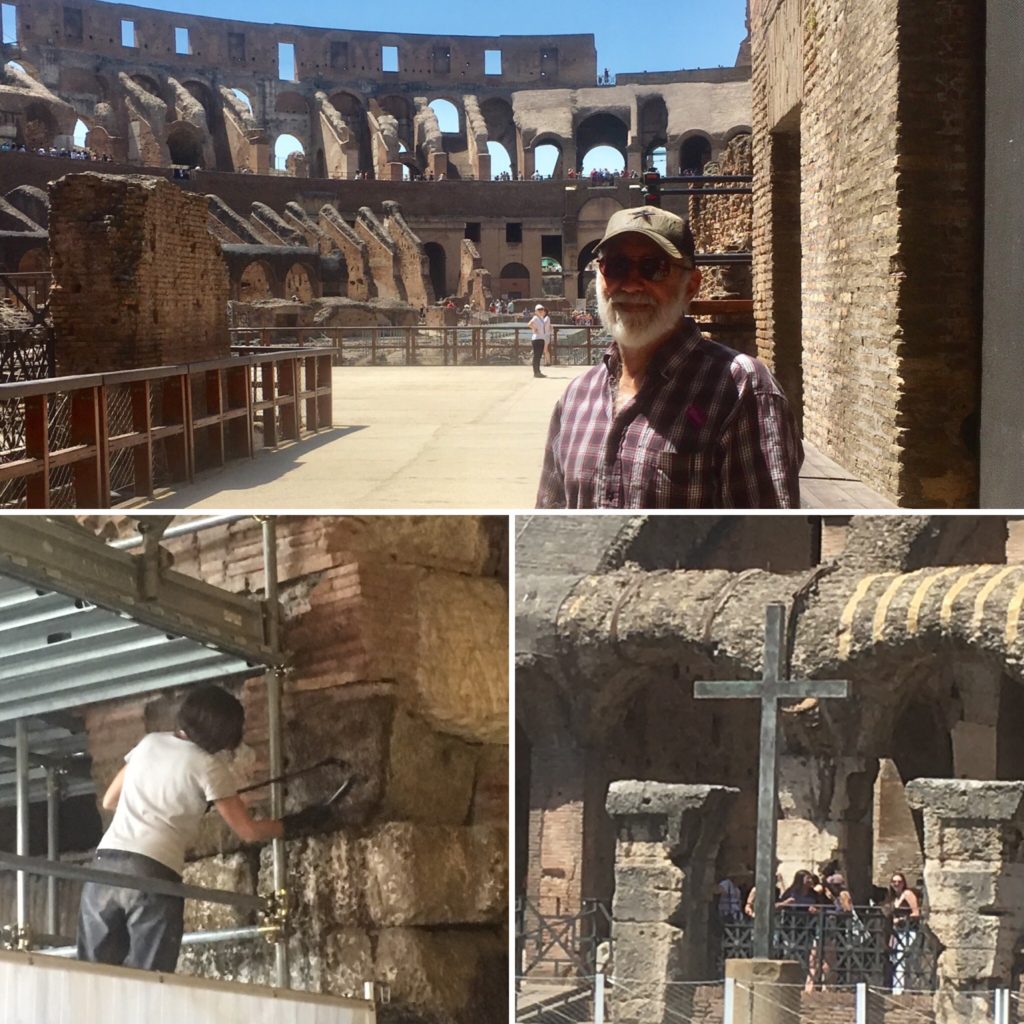
Underneath the Colosseum is a maze of tunnels, rooms, and elevators. The elevators were used bring the gladiators and animals to the arena floor.
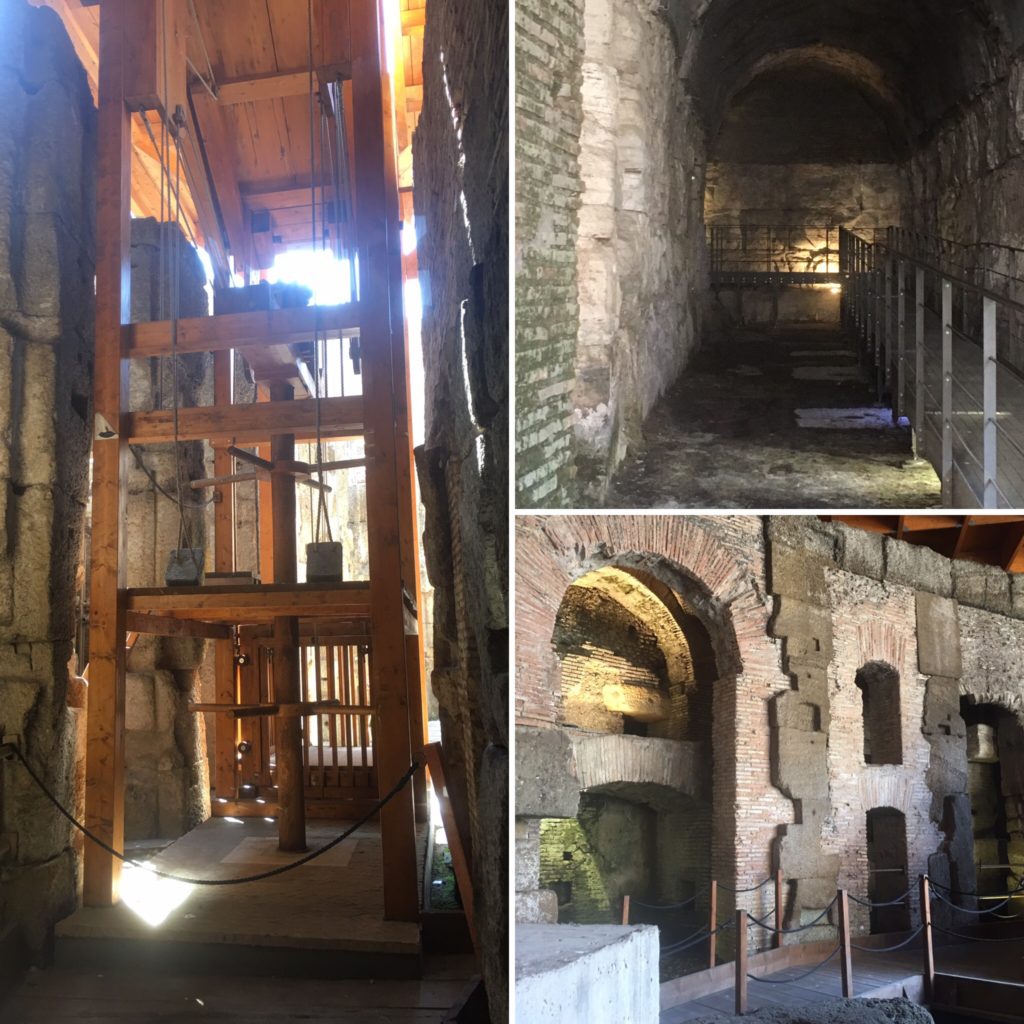
Left: elevator for moving gladiators and wild animals Top-right: passageway for gladiators Top-bottom: rooms for animals (top) and gladiators (bottom)
Next stop: Atlanta!
